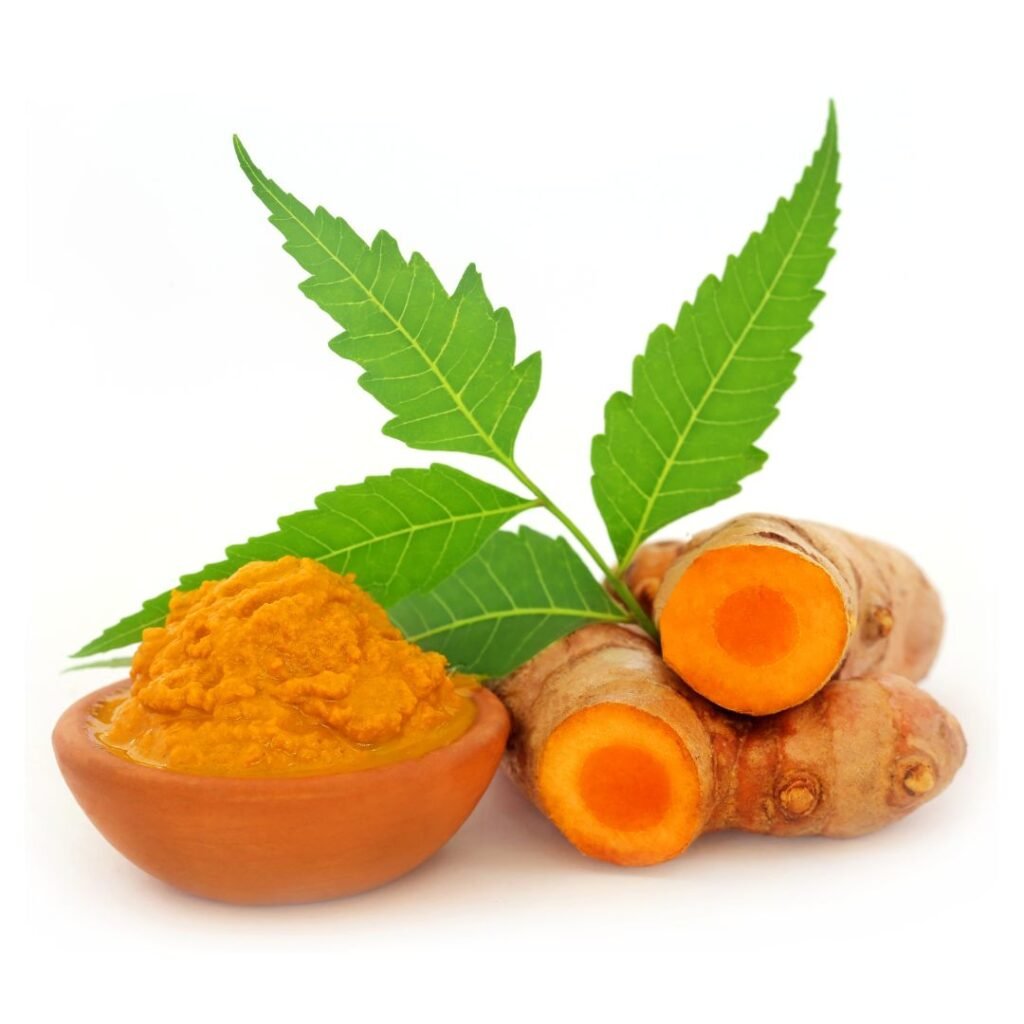We can’t estimate the power of natural plants. Many of the modern medicines are produced with the help of those plants. However, the usage of chemically synthesized drugs has disappeared from home pharmacies. So knowledge about medicinal plants is needed.
To familiarize the values and features of medicinal plants here we are introducing the top 10 medicinal plants with pictures and scientific names.
Top 10 medicinal plants with pictures and scientific names
1. Turmeric (Curcuma longa)

Turmeric is native to southern Asia. It is used as a spice as well as a herb. The spice gives curry it’s yellow color. Turmeric contains many medicinal compounds, which make it rank high among the top 10 medicinal plants.
And are called curcuminoids. In which the most important one is curcumin. It is a strong antioxidant and has powerful inflammatory effects since curcumin can play a major to inhibit inflammation.
Researchers have been studying the curcumin content in turmeric and how can it be used as a beneficial herb for the treatment of cancer. Results of studies show that it can reduce the progress of cancer development and it’s spreading at the molecular level.
Using turmeric can also build our body to fight foreign invaders and repair damage to the tissues.
2. Ginger (Zingiber officinale)

Ginger is widely used as a folk medicine or as a spice. Ginger is actually a root. It belongs to the turmeric family. Ginger originated in southern Asia. It can be consumed as powder, juice or as a spice. The consumption of plant foods like ginger decreases the risk of obesity, diabetes, heart disease, and overall mortality.
Including ginger in the diet will be helpful in treating many kinds of Nausea, Especially Morning Sickness. Ginger is an effective natural remedy for muscle pains induced after workouts or exercise.
It can also drastically reduce the sugar level in the blood and prevent risk factors for Heart Disease.
3. Pepper (Piper nigrum)

Pepper (also known as the king of spices) is one of the most widely used spices around the world. It can be used in both wholes and grounded form.
The medical use of pepper is more beneficial. It aids digestion and gives relieves coughs and colds. It is very rich in mineral content and also it contains nutrients such as manganese, potassium, iron, dietary fiber, and vitamins c and k. The properties like antibacterial, antioxidant, and anti-inflammation make pepper an amazing spice.
In traditional Ayurvedic practices, pepper is used in medicine for coughs and colds as a home remedy. It is also very effective in for the relief of sinusitis and nasal congestion. Pepper has the capability to break up the mucus and phlegm clogging the respiratory tract, making the breathing process much easier.
4. Spinach (Spinacia oleracea)

Spinach is one of the world’s healthiest foods. It provides more nutrients than any other food. It contains fewer calories but is very high in vitamins and minerals.
The greenish leaf provides vitamin K, vitamin A, magnesium, folate, manganese, iron, calcium, vitamin C, vitamin B2, potassium, and vitamin B6. Use of fresh spinach leaves have proven health benefits for the health of eyes, and it is also very nourishing for the eyes.
Glycoglycerolipids content in the spinach can help to protect the digestive line track from damage. specifically, those damages related to unwanted inflammations
5. Holy Basil (Ocimum tenuiflorum)

Holy basil or Tulsi is one of the potent herbs that is used in India. And is one of the most sacred plants in India. it has great potential in the areas of stress relief and relaxation.
Medical studies show that people who take about 500 milligrams of holy basil extract each day have less possibility of falling anxious, stressed, and depressed. Hence using it can make people more social than before. It is also used as a mosquito repellent, and to counteract scorpion bites and snakes.
6. Cinnamon (Cinnamomum verum)

Cinnamon is a spice that is obtained from the inner bark of certain kinds of trees which includes in the genus Cinnamomum.
It is used as an ingredient in both sweet and savory foods. The term cinnamon also refers to its mid-brown color. About 27,500 to 35,000 tons of cinnamon are being produced across the world each year.
Recent researchers have found that some particular kind of cinnamon has the ability to lower blood sugar levels in people who are diabetic.
Nevertheless, consuming high quantities of cassia cinnamon may be toxic, especially for those people who have liver problems. Since cinnamon can lower blood sugar, people with diabetes should adjust their treatment accordingly if they use cinnamon supplements.
Apart from that lab researchers have found that cinnamon can reduce inflammation, possess antioxidant effects, and can fight bacteria.
7. Neem (Azadirachta indica)

Neem is also known as Azadirachta indica, and is prominent among the Top 10 medicinal plants in asian countries. This species of medicinal plant is native to India and the Indian subcontinent including Nepal, Pakistan, Bangladesh, and Sri Lanka. And typically is grown in tropical and semi-tropical regions. The fruits, leaves, and seeds are used for producing neem oil.
In India, the products of neem trees have been used for medicinal applications ever since ancient times. Siddha and ayurvedic practitioners in India believe that the neem tree has a lot of medicinal values like antifungal, antidiabetic, antibacterial, antiviral, contraceptive, and seductive applications.
Need products are considered an essential component of treatment in Ayurvedic, Siddha medicine, and Unani treatment.
It is also having medicinal value for the treatment of various kinds of skin diseases. Neem oil is used for improving hair health, functioning of the liver, blood purification, and maintaining a balanced sugar level.
8. Lavender (Lavandula)

Lavender is a flowering plant belonging to the mint family and is one among the top 10 medicinal plants on earth. This is mainly found in places like the Canary Islands, European tropical areas, across northern and eastern Africa, and southwest Asia to southeast India.
Even though its cultivation is well known for its use as an ornamental plant or flower, there are plenty of medicinal values contained in lavender.
From a commercial point of view, the plant is mainly grown for the production of the essential oil of lavender. This has antiseptic and anti-inflammatory characteristics. These extracts are extensively used as fragrances in bathing products.
Traditionally, lavender has been used for treating neurological issues like migraines, anxiety, stress, and depression. And it’s exciting to see that modern research has finally found proof to confirm the truth behind traditional treatment.
According to recent studies, there is growing evidence which shows that lavender oil can be an effective remedy for several neurological disorders.
Lavender is well known for its antimicrobial properties, which can speed up the healing of burns, cuts, scrapes, and wounds.
9. Aloe Vera (Aloe Barbadensis Miller)

Aloe vera belongs to a succulent plant species. It is a stemless plant that can grow to a height of around 60-100 cm in length and is mainly cultivated for medicinal and agricultural purposes. It is also widely used for decorative purposes as well and can be grown successfully indoors in a potted plant.
It is widely used in the production of cosmetics considering the moisturizing, soothing, and healing properties of aloe vera. Because of its soothing and reduced inflammation, it is widely used as an after-sun treatment. Aloe vera gel can be applied to the area of sunburns.
Aloe vera is traditionally used for the treatment of skin, And it is used widely as an ingredient in traditional herbal medicine in many countries. It can perform miracles not just for your skin, but also beneficial for the hair and health as well. No wonder aloe vera is counted as one of the top 10 medicinal plants available.
10. Brahmi (Bacopa monnieri)

Brahmi is the last but the least among the top 10 medicinal plants, it is an herbal plant mainly seen in wetland areas of southern and eastern India, Europe, Australia, Africa, and north-south American areas.
This Indian Ayurvedic herb is well known for its multiple health and medicinal benefits. It is extensively used in Ayurveda as a medicinal plant. The word “Brahmi” came from the Hindu mythology.
Brahmi has a major role in the traditional ayurvedic treatments for epilepsy and asthma. Apart from that, it is also an effective natural remedy for a variety of diseases like ulcers, tumors, ascites, inflammation, laparoscopy, anemia, and gastroenteritis.
These are the list of top 10 medicinal plants with pictures and scientific names derived from the research of Healthveins team.
